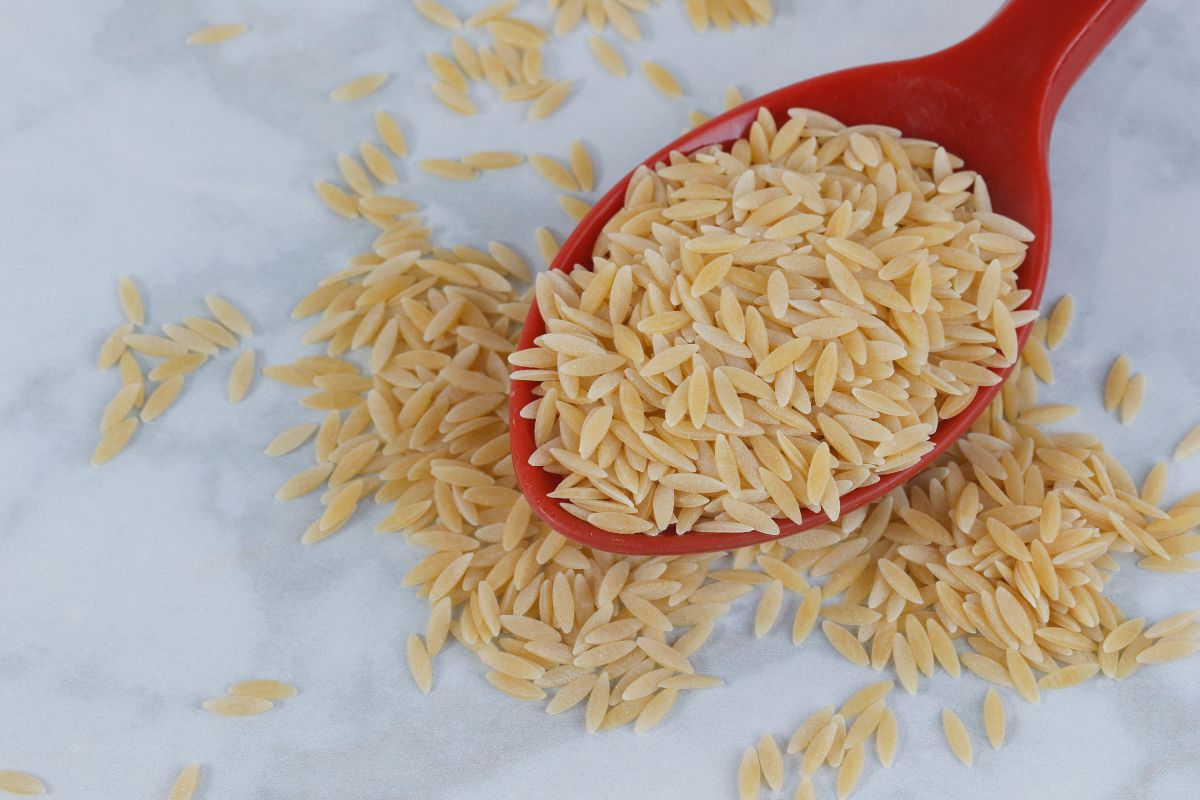Short answer? Nope.
Longer answer? Well… it depends on what you’re holding in your hands.
If it’s the usual box of orzo from the supermarket—probably sitting on a shelf next to spaghetti and penne—it’s almost certainly made from wheat. That means it’s not gluten-free. No surprises there.
But the thing is, orzo doesn’t look like pasta. It’s shaped like rice. It hides in soups. It shows up in grain bowls. It’s easy to think it’s something else entirely. People mix it up with things like couscous, bulgur, and other pasta-ish-but-not-quite-pasta ingredients. And for anyone trying to eat gluten-free, that mix-up can lead to a real stomachache.
The Great Orzo Confusion
Orzo plays tricks. It gets invited to a lot of places where gluten usually isn’t. Like that “zesty summer salad” at the café with roasted peppers, olives, and crumbled feta. Or the cozy-looking soup with a lemony broth and fresh dill. You’d be forgiven for thinking it was some kind of grain.
But behind that polished look? It’s still pasta. And unless it says otherwise, it’s probably not the kind that’s safe for gluten-free diets.
Can You Find a Gluten-Free Version?
Yes, absolutely. But you have to know where to look. Gluten-free orzo isn’t typically hanging out with the regular pasta. It’s either buried in the “free-from” aisle, hanging out near the quinoa, or hiding online.
Some companies make orzo using
- Rice flour – mild, a little soft, holds up in soup.
- Corn flour – slightly chewy, nice bite.
- Chickpeas – protein-heavy, earthy flavor, not for everyone.
- Quinoa – chewy and nutty, great in bowls.
These gluten-free versions don’t always feel exactly like traditional orzo, but they get the job done. Most folks wouldn’t even know the difference once everything’s mixed in.
Actual Brands People Like (Not Just Random Names)
Some gluten-free orzos are pretty forgettable. But a few? Worth stocking the pantry with:
- Jovial – Their brown rice orzo is a bit of a staple in the GF community. Tastes solid, doesn’t fall apart.
- Delallo – Has a corn/rice combo orzo that feels familiar, not weirdly soft or grainy.
- Ancient Harvest – The quinoa one. Best for grain bowls and roasted veggie situations.
- Andean Dream – Chickpea-based. It’s not everyone’s thing, but it’s solid in spicy dishes or with tomato sauce.
These brands have built a bit of a reputation—not just for taste, but for not messing around with cross-contamination. That’s a big deal when it comes to gluten-free foods.
The Fine Print Matters
One glance at a box isn’t enough. Gluten-free products have to do more than just leave out wheat. They need to be processed somewhere that keeps things clean. A kitchen that makes regular pasta might accidentally toss some wheat around. It doesn’t take much to mess things up for someone sensitive.
So the safe bet? Look for “Certified Gluten-Free” on the label. That little badge isn’t just for show—it means real testing happened and it meets actual standards.
Going Out? Ask the Awkward Question
Restaurants can be hit or miss. Some have whole gluten-free menus. Others? Not so much.
If “orzo” shows up in a dish, chances are it’s not gluten-free—unless they say so directly. Kitchen staff usually use the regular stuff. And unless someone behind the scenes is celiac-aware, that orzo salad could be trouble.
Best advice: just ask.
Something as simple as, “Hey, is the orzo in this gluten-free?” can make a big difference. If they don’t know or give a weird answer, skip it. There’s always something else on the menu that won’t make your body mad at you.
How People Actually Use Gluten-Free Orzo
People who eat gluten-free don’t buy orzo just to look at it. They put it to work in weeknight dinners, meal-prep lunches, and the occasional feel-good pasta bake. Here are some of the ways it shows up in real kitchens:
- Chilled salad with cucumbers, dill, and lemon juice. Add some chickpeas and call it lunch.
- Hearty soup with shredded chicken and soft carrots. Orzo takes the place of noodles and soaks up all the flavor.
- Roasted veggie bowl with tahini drizzle. Gluten-free orzo gives it some substance without stealing the show.
- Skillet orzo with tomatoes, garlic, and basil. Kind of like risotto, but faster and easier.
You don’t need anything fancy. Just boil, toss, and enjoy.
A Note on Price (Because Yeah, It Costs More)
Let’s be honest—gluten-free orzo isn’t cheap. Regular orzo? A couple of bucks, maybe less. The gluten-free kind? Usually double that.
And sure, it’s annoying. But it’s also just part of eating gluten-free these days. You pay more for fewer ingredients and a lot more care during production. But if eating regular orzo makes someone sick for three days, that extra few dollars is worth it.
Final Thoughts
Orzo’s tricky. It doesn’t look like pasta, but it is. Most of the time, it’s made from wheat and not gluten-free. That’s just the reality.
But it doesn’t mean people avoiding gluten have to give it up completely. With the right brand and a bit of label-checking, orzo can still be on the table. Whether it’s for a quick salad, a cozy soup, or something fancier, gluten-free orzo is out there, and it’s not half bad.
Sometimes it’s a little softer. Sometimes it costs more. But it still gives people the same feeling: something warm, satisfying, and easy to throw together.
And honestly? That’s enough.
Tags: Is Orzo Gluten-FreeOrzo

